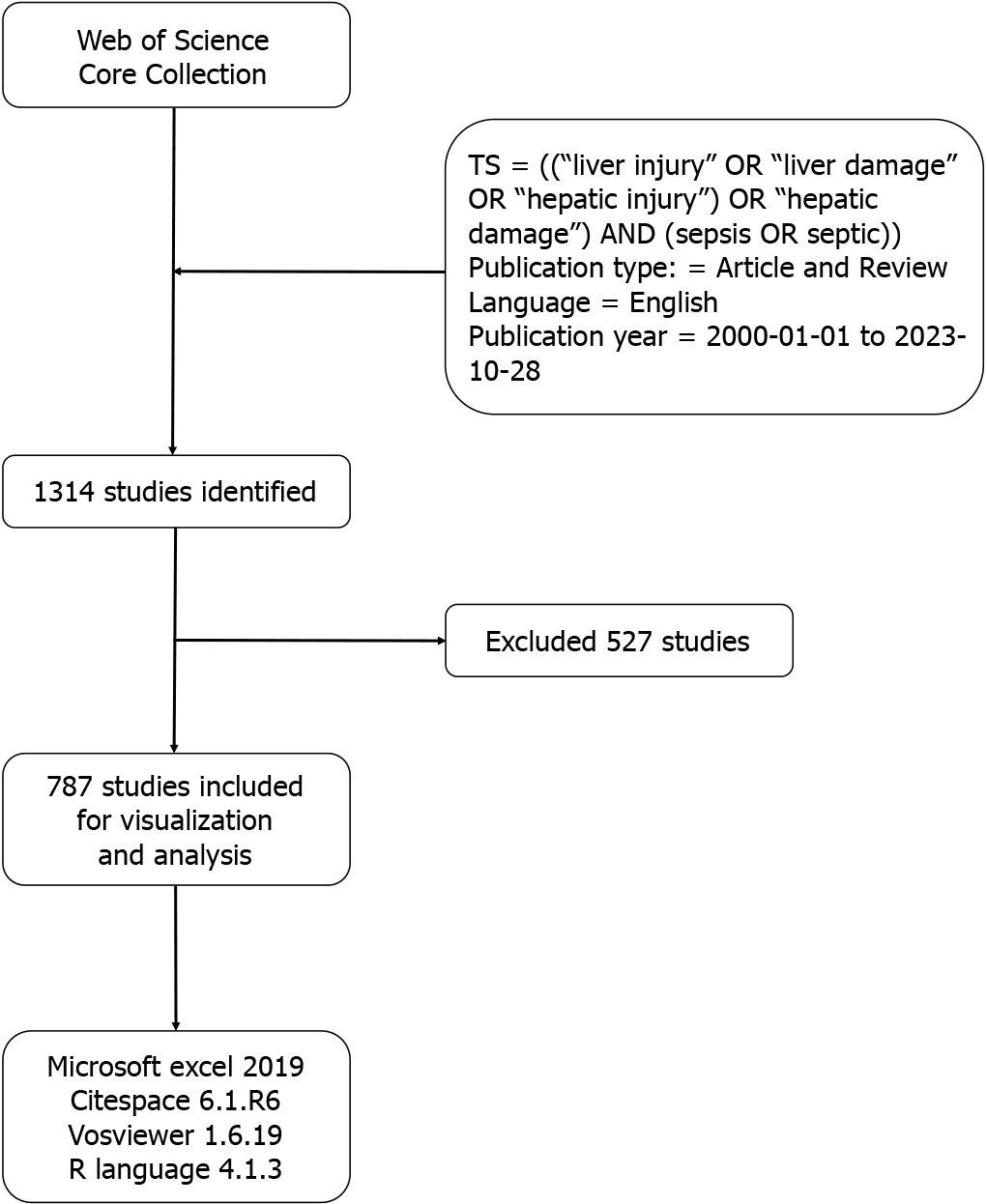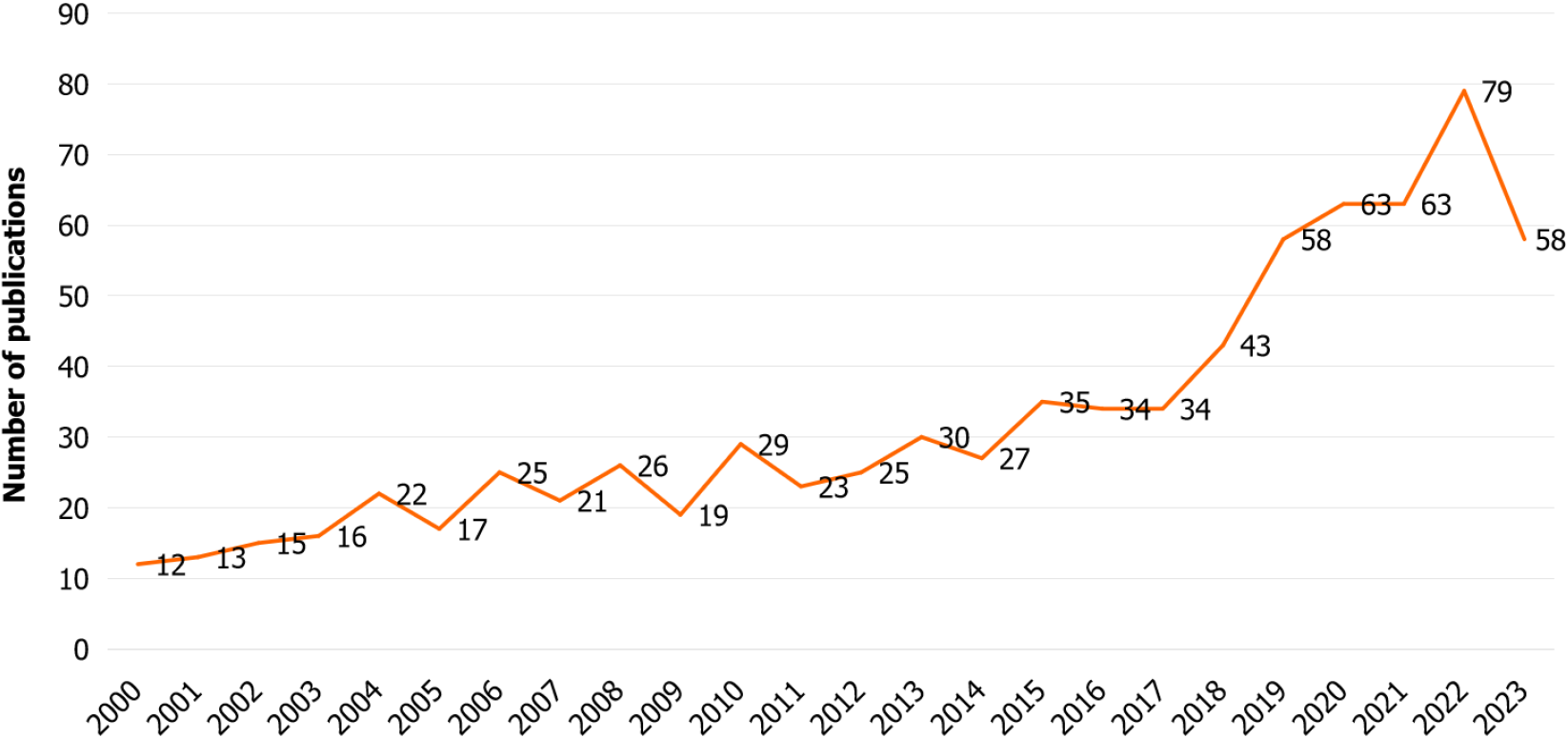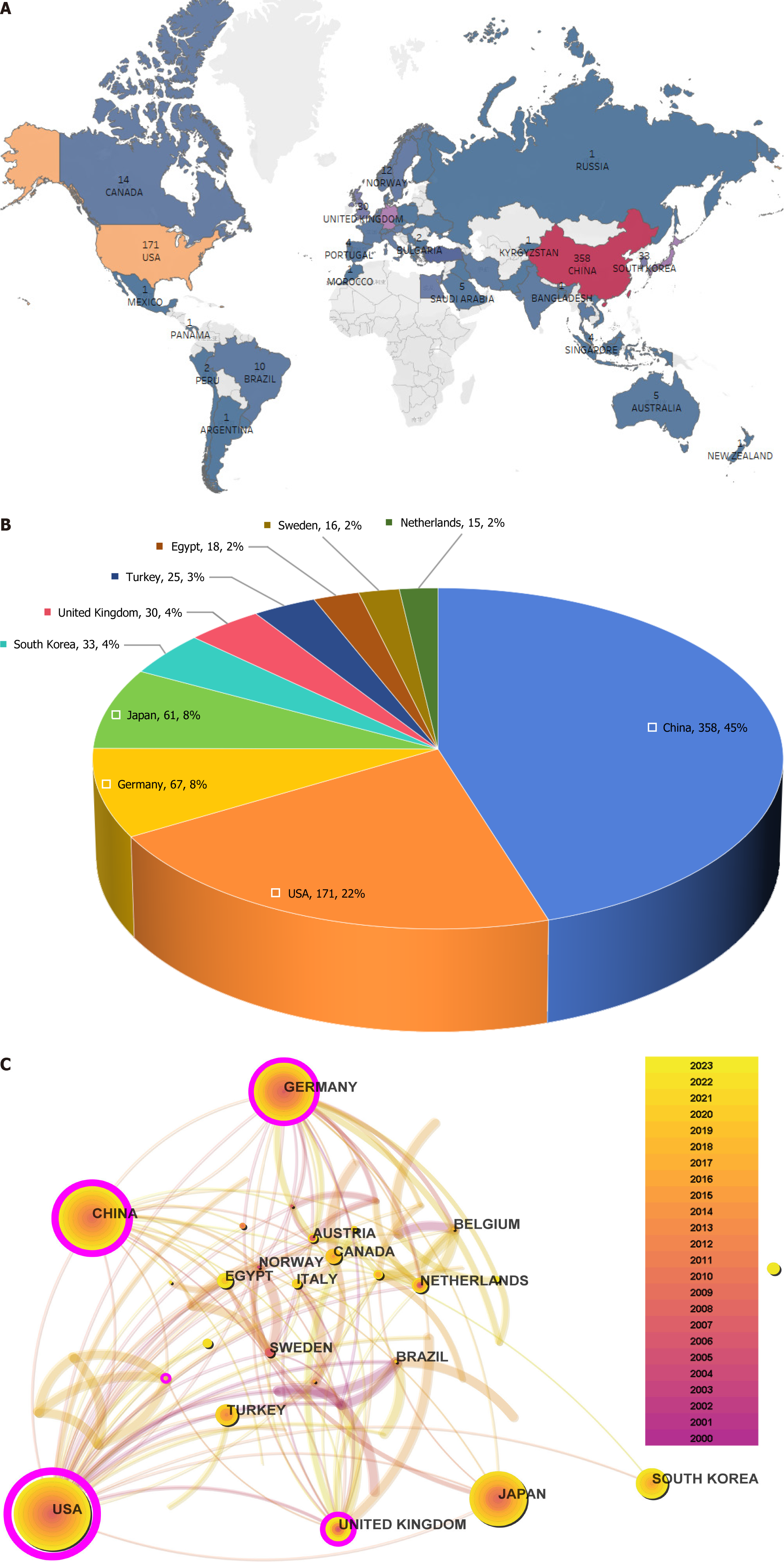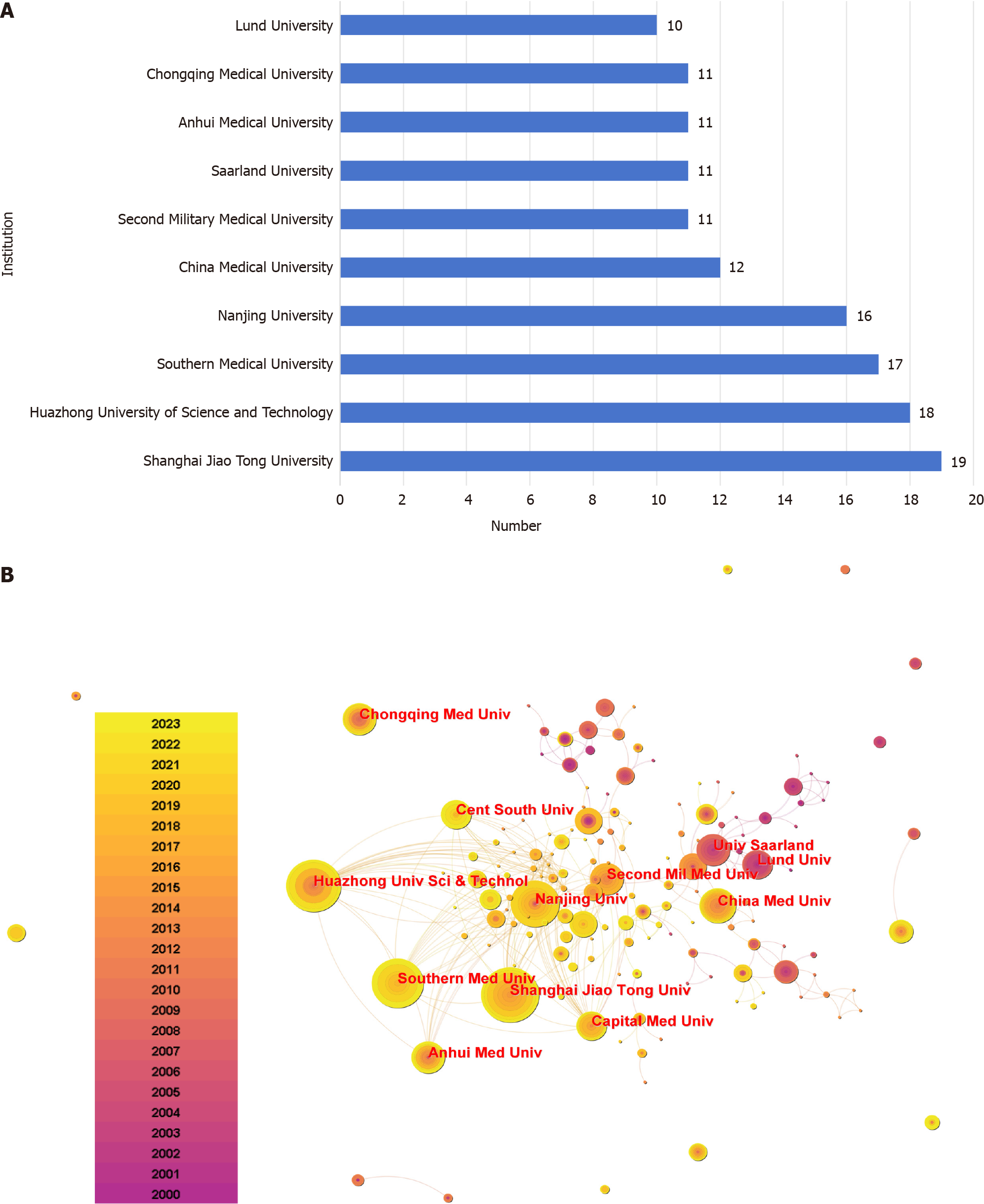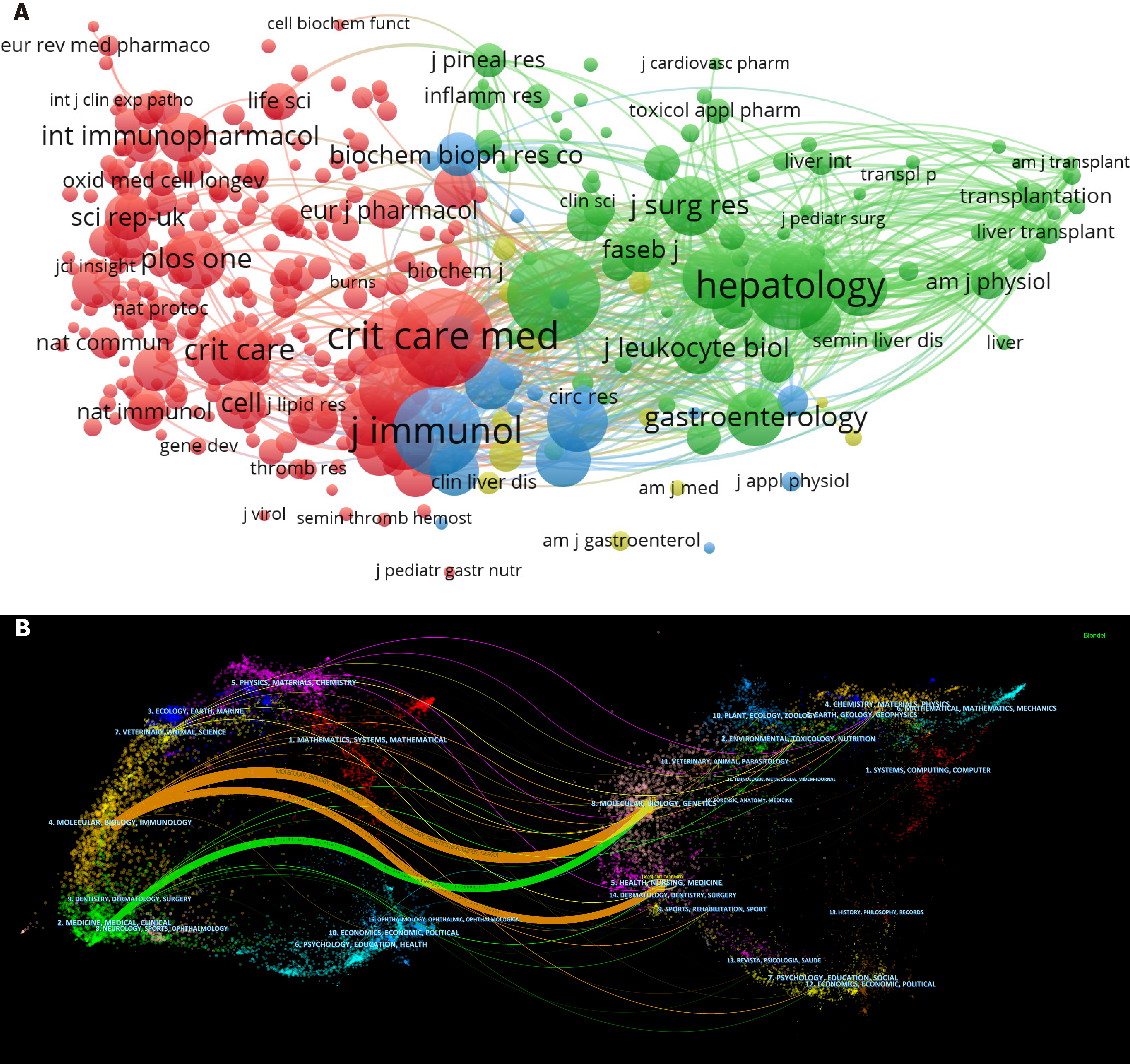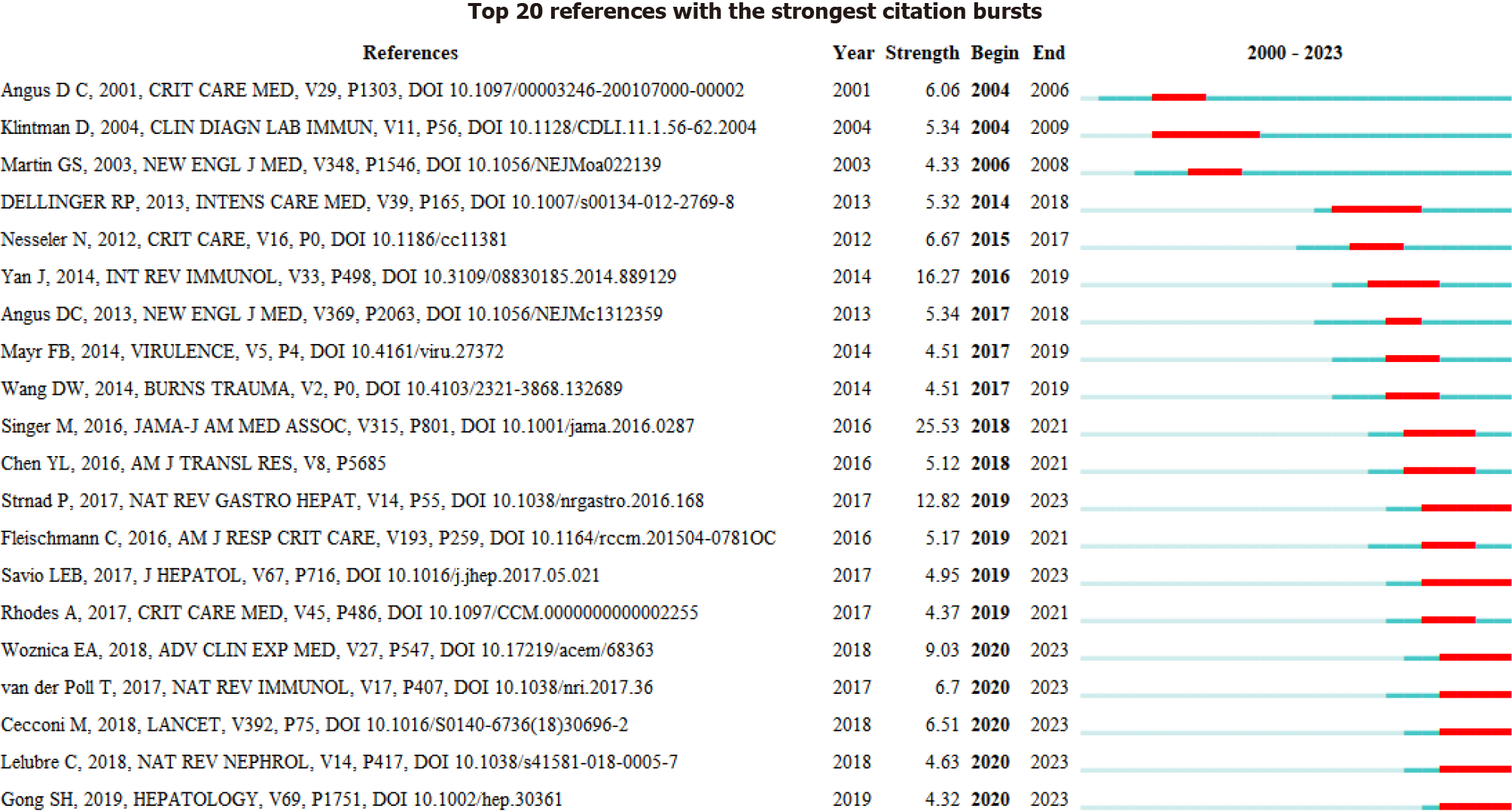Copyright
©The Author(s) 2024.
World J Gastroenterol. Aug 14, 2024; 30(30): 3609-3624
Published online Aug 14, 2024. doi: 10.3748/wjg.v30.i30.3609
Published online Aug 14, 2024. doi: 10.3748/wjg.v30.i30.3609
Figure 1 Flowchart showing literature inclusion, exclusion and analysis process.
Figure 2 Numbers of publications on sepsis-associated liver injury by year.
Figure 3 Publication count and collaboration network by country.
A: The world map labeled with the country; B: Publication numbers by country; C: Co-authorship among countries that published at least 10 papers. Each node represented a country, and the green color ring represented publications in a specific year. Purple rings indicated high centrality.
Figure 4 Institutional analysis.
A: The top 10 institutions in term of publications; B: Distribution map and collaboration network among institutions. The map shows active cooperation among institutions, with thicker lines representing closer collaboration.
Figure 5 Journal analysis.
A: Co-citation map of journal with the threshold of 15 times. Each node represents a journal; B: Dual-map overlay of journals in which research was published (left) or cited (right). Colors distinguished the disciplines, and the thickness of the lines represented a closer alignment in research content.
Figure 6 The top 20 references with the strongest citation bursts.
Figure 7 The mapping on authors of sepsis-associated liver injury.
The nodes represent authors, and the size of the node reflects the co-citation frequency of the author’s published articles.
Figure 8 Keyword analysis.
A: A visual map of keywords used at least 30 times; The node size represents the keywords’ frequency, while the lines represent their correlations; B: Top 20 keywords with the strongest citation bursts by year. TNF-α: Tumor necrosis factor alpha; NF-κB: Nuclear factor-kappa B; CLP: Cecal ligation and puncture; LPS: Lipopolysaccharides.
- Citation: Zhang Z, Tan XJ, Shi HQ, Zhang H, Li JB, Liao XL. Bibliometric study of sepsis-associated liver injury from 2000 to 2023. World J Gastroenterol 2024; 30(30): 3609-3624
- URL: https://www.wjgnet.com/1007-9327/full/v30/i30/3609.htm
- DOI: https://dx.doi.org/10.3748/wjg.v30.i30.3609









